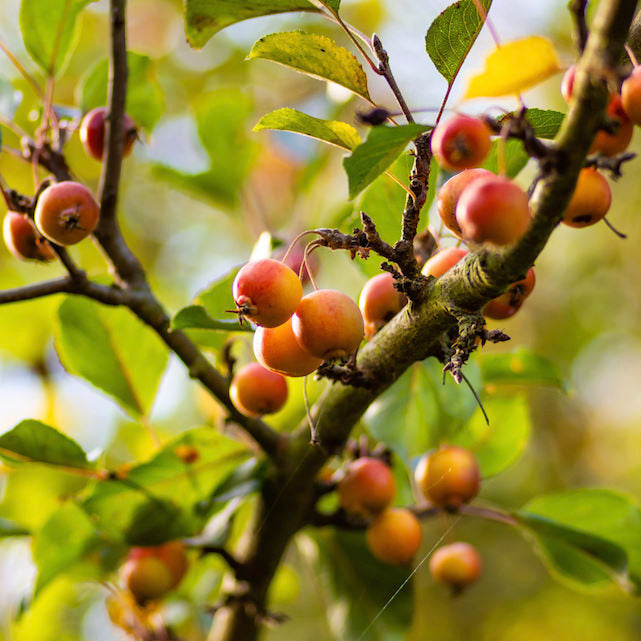Your Cart is Empty

Garcinia indica Tree and Maturing Fruit
Garcinia indica is a tropical evergreen tree that grows to a height of 50 or more feet. It is uniquely found in both wet and relatively dry regions, and is widely spread throughout Africa and India. This tree is found mostly wild and when cultivated it is done only on a very small scale. Kokum trees do not require irrigation, spraying of pesticides or fertilizers due to the fact that they are naturalized to this region of the world. Early in the year, Kokum fruits are tender and green, ripening to a deep reddish purple as harvest time nears. These precious fruits are in the height of harvest through out April and May of each year. A single mature tree has the ability to bear hundreds of fruit each year.
Historically Kokum has been used in a vast array of forms. As a culinary spice, a delicious deep red antioxidant rich drink, pink/purple dye for clothing and textiles, as a medicine, a beauty Secret and so much more!!!! Many indigenous cultures have used this tree; leaves, fruit, and fat as a part of their every day living. It has helped sustain cultures, provided much needed nutrition, and created tradable income.

Fruit From the Kokum Tree
Kokum fruits are picked as they turn to deep reddish purple. Upon ripening, the outer skin is removed and the seeds and skin are dried separately in the sun. The harvesting of Kokum (butter and other products) is almost solely a cottage industry, as there are no actual cultivated Kokum orchards anywhere. Kokum butter is rendered when the kernels inside the fruit are dried. They are then crushed into a pulp and put into boiling water. The vegetable fat is skimmed off the top as it slowly boils out. The Kokum butter is then put into a clean vessel and ran through a cloth or straining devise. As it cools it also begins to harden. Kokum butter when left at room temperature is one of the hardest vegetable butters known. It's melting point is between 99 and 104 degrees F (38-40 C) but melts well when in contact with skin.

Kokum Butter
Kokum butter has high antioxidant properties meaning it helps combat free radicals. It is rich in citric acid, hydroxicitric acid, malic acid, polyphenols and acetic acid. This butter also contains garcinol, vitamin B complexes, potassium, manganese, and magnesium. What does this mean for our skin? This butter is a very emollient, hydration replenishing butter! Kokum has much less natural odor than coco butter or other vegetable butters and it is rich in essential fatty acids (omega's 3, 6, and 9). These EFA's aid in cell oxygenation and are more bio available for our bodies, meaning it is easier for our skin to accept the nutrients than from many other natural butters. The vitamin E found in Kokum butter aids and supports skin elasticity and flexibility of the cell walls. This wonderful butter has the ability to soften and heal chapped and cracked skin of lips, hands and heals of the feet. Kokum butter has been used in Traditional Ayurvedic medicine (the healing art form through out India) for thousands of years. They have used it in healing skin ailments such as rashes, burns, skin allergies, as well as an aid in the reduction of fine lines and wrinkles, chapped, dry skin, as an aid to improve the hydration barrier atop the dermal layers of skin. This butter has always been seen as the best option for sensitive skin. It is non-comedogenic (non pore-clogging) making it suitable for use on the face and other acne prone areas. It is a wonderful addition to many cosmetics though very rarely used in products in the United States.
All of Recherché Organics bar soaps are imbued with Kokum Butter. This very gentile, nutrient rich butter is purchased by Recherché as a fair trade ingredient .
As always we would love to hear of your experiences with our products and answer questions that you might have.
Until Next Time Beauties,
Hillari Ladd